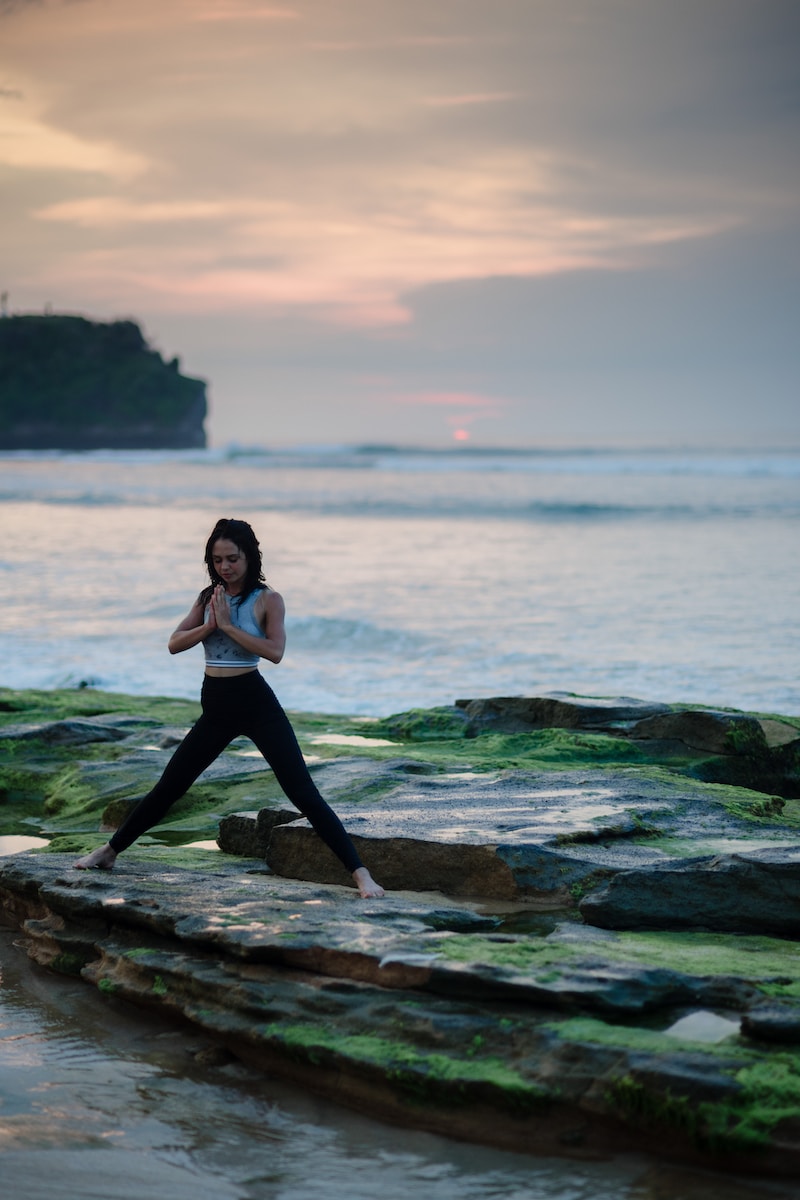Pilates is a unique form of exercise that has gained immense popularity over the years. With a focus on core strength, flexibility, and mindfulness, Pilates offers a holistic approach to enhancing overall wellbeing. In this article, we will explore the numerous benefits of Pilates and how it can positively impact your body and mind.
What is Pilates?
Pilates is a low-impact exercise system that was developed in the early 20th century by Joseph Pilates. It is designed to improve physical strength, flexibility, coordination, and posture, while also promoting mental awareness and overall relaxation. The core principles of Pilates include concentration, control, centering, precision, breath, and flow. These principles are incorporated into each exercise, making Pilates a mindful and intentional form of movement.
Pilates is not just another exercise routine; it is a comprehensive approach to physical and mental wellbeing. By combining controlled movements with focused breathing, Pilates helps individuals develop a deep connection between their mind and body. This mind-body connection is essential for enhancing overall awareness and promoting a sense of balance and harmony.
The Benefits of Pilates
1. Strengthening the Core
One of the key focuses of Pilates is strengthening the core muscles, which include the abdominals, back, and pelvic floor. By targeting these deep muscles, Pilates helps to improve posture, stability, and overall strength. A strong core not only enhances physical performance in other activities but also reduces the risk of injuries and back pain.
In addition to the core muscles, Pilates also works on strengthening the muscles in the arms, legs, and glutes. By engaging multiple muscle groups simultaneously, Pilates provides a full-body workout that improves overall strength and stability. This comprehensive approach to muscle strengthening helps individuals develop a balanced and well-toned physique.
To further enhance core strength during Pilates, you can incorporate specific exercises such as the “Hundred” and the “Plank.” These exercises engage the deep abdominal muscles and challenge the stability of the core, leading to increased strength and endurance.
2. Improving Flexibility
Pilates is known for its emphasis on elongating and stretching the muscles. Through a series of controlled movements, Pilates helps to improve flexibility and range of motion in the joints. This increased flexibility can lead to better alignment, reduced muscle tension, and improved overall mobility.
In Pilates, each movement is executed with precision and control, allowing individuals to safely stretch their muscles without straining or causing injury. The slow and deliberate nature of Pilates exercises allows the muscles to lengthen gradually, resulting in improved flexibility over time.
To target specific muscle groups and enhance flexibility, Pilates incorporates exercises such as the “Roll Up” and the “Spine Stretch Forward.” These exercises focus on stretching the spine, hamstrings, and hip flexors, promoting increased flexibility in these areas.
3. Enhancing Body Awareness
With its focus on precision and control, Pilates promotes body awareness. By engaging in mindful movement, individuals become more conscious of their body’s alignment and movement patterns. This heightened sense of body awareness can be beneficial in everyday activities, as it helps individuals to move more efficiently and reduce the risk of injury.
In Pilates, the emphasis is not just on performing the exercises correctly but also on being aware of how each movement feels within the body. By paying attention to the sensations and alignment of their body, individuals can make necessary adjustments and modifications to ensure proper form and prevent strain or injury.
To further enhance body awareness during Pilates, instructors may incorporate exercises that focus on proprioception, such as standing on one leg or balancing on an unstable surface. These exercises challenge individuals to maintain proper alignment and balance, further developing their body awareness.
4. Promoting Relaxation and Stress Reduction
Pilates incorporates breathing techniques and mindful exercises that promote relaxation and stress reduction. By focusing on the breath and being present in the moment, individuals can experience a sense of calm and mental clarity. This aspect of Pilates makes it an excellent practice for managing stress and improving overall mental wellbeing.
During Pilates, individuals are encouraged to synchronize their breath with their movements, creating a sense of flow and rhythm. This deep focus on breath helps to relax the mind and release tension in the body. By consciously breathing deeply and fully, individuals can activate the parasympathetic nervous system, which promotes relaxation and reduces stress.
To further enhance relaxation during Pilates, individuals can incorporate specific breathing exercises such as the “Hundred Breath” and the “Modified Swan Breath.” These exercises focus on deep diaphragmatic breathing, allowing individuals to connect with their breath and experience a sense of calm.
5. Rehabilitating and Preventing Injuries
Pilates is widely recognized for its rehabilitative benefits. Many physical therapists and healthcare professionals recommend Pilates as a form of exercise for individuals recovering from injuries or dealing with chronic pain. The controlled movements and emphasis on core stability can help to strengthen weak muscles, improve flexibility, and promote proper alignment, aiding in injury prevention and recovery.
Pilates exercises are gentle on the joints and can be modified to suit individual needs and limitations. The controlled and precise nature of Pilates movements ensures that individuals can safely engage in exercise without exacerbating existing injuries or causing additional strain.
To rehabilitate and prevent injuries during Pilates, individuals should work closely with a qualified instructor or physical therapist who can provide personalized guidance and modifications. It is important to communicate any injuries or concerns to the instructor to ensure that the exercises are tailored to your specific needs.
6. Enhancing Posture and Alignment
In today’s sedentary lifestyle, poor posture has become a common issue. Pilates focuses on aligning the body and improving posture by strengthening the muscles that support the spine and maintaining proper alignment during movement. This emphasis on postural alignment can help alleviate pain and discomfort caused by poor posture, leading to improved overall spinal health.
Pilates exercises target the muscles in the back, abdomen, and buttocks, which play a crucial role in maintaining proper posture. By strengthening these muscles, Pilates helps to counteract the negative effects of prolonged sitting and poor alignment.
To further enhance postural alignment during Pilates, individuals should pay attention to their body’s position and engage in exercises that specifically target the muscles responsible for maintaining good posture. Exercises such as the “Swan” and the “Bridging” focus on strengthening the back extensors and gluteal muscles, promoting optimal spinal alignment.
7. Boosting Energy Levels
Regular Pilates practice can have a positive impact on energy levels. By engaging in a series of controlled movements and breathing exercises, Pilates helps to increase circulation, oxygenation, and overall vitality. The improved blood flow and oxygen supply enhance energy levels, leaving individuals feeling invigorated and refreshed.
During Pilates, the combination of movement and deep breathing stimulates the cardiovascular system, promoting efficient oxygenation of the muscles and organs. This increased oxygen supply results in improved energy levels and a heightened sense of alertness.
To further boost energy levels during Pilates, individuals can focus on maintaining a steady and rhythmic breathing pattern throughout the exercises. Additionally, incorporating dynamic movements such as the “Hundred” and the “Rolling Like a Ball” can help increase heart rate and circulation, further enhancing energy levels.
8. Promoting Weight Loss and Toning
While Pilates may not be as intense as high-intensity interval training (HIIT) or cardio exercises, it can still contribute to weight loss and toning. Pilates exercises target multiple muscle groups simultaneously, leading to increased muscle mass and improved overall body composition. Additionally, the emphasis on core strength and stability helps to tone the abdominal muscles, creating a leaner and more sculpted physique.
Pilates workouts are designed to engage both the large and small muscle groups, resulting in an effective full-body workout. The controlled movements and isometric contractions used in Pilates help to build lean muscle mass, which in turn increases the body’s metabolic rate and promotes calorie burn.
To maximize weight loss and toning during Pilates, individuals should incorporate a combination of strength-building exercises and cardiovascular activities into their routine. This can include exercises such as the “Pilates Push-Up” and the “Standing Side Kick,” which target the major muscle groups while also providing a cardiovascular challenge.
How to Get Started with Pilates
If you’re interested in embracing Pilates for enhanced wellbeing, here are a few steps to get started:
-
Research and find a qualified Pilates instructor or studio that offers classes suitable for your fitness level. Look for instructors who have completed comprehensive training programs and have experience working with individuals of various abilities and needs.
-
Begin with an introductory class or private session to learn the basic principles and familiarize yourself with the exercises. This will allow you to receive personalized guidance and ensure that you are performing the exercises correctly.
-
Invest in comfortable and breathable clothing that allows for ease of movement. Choose clothing that is not restrictive and allows for full range of motion. Additionally, consider wearing supportive footwear, such as grip socks or athletic shoes, to provide stability and prevent slipping.
-
Incorporate Pilates into your weekly routine, aiming for at least two to three sessions per week to experience the full benefits. Consistency is key when it comes to Pilates, so make it a priority to schedule regular sessions and commit to the practice.
-
Stay consistent and be patient with your progress. Pilates is a practice that requires time and dedication to see significant results. Celebrate small milestones along the way and focus on how Pilates makes you feel, both physically and mentally.
In conclusion, Pilates offers a comprehensive approach to enhancing wellbeing by focusing on strengthening the body, improving flexibility, promoting mindfulness, and reducing stress. Whether you’re a beginner or an experienced fitness enthusiast, Pilates can be easily incorporated into your routine. Embrace the power of mindful movement and experience the transformative effects of Pilates on your body and mind.
FAQ
1. What is Pilates?
Pilates is a low-impact exercise system that focuses on improving physical strength, flexibility, coordination, and posture, while also promoting mental awareness and relaxation.
2. What are the benefits of Pilates?
The benefits of Pilates include strengthening the core, improving flexibility, enhancing body awareness, promoting relaxation and stress reduction, rehabilitating and preventing injuries, enhancing posture and alignment, boosting energy levels, and promoting weight loss and toning.
3. How can Pilates help with core strength?
Pilates targets the core muscles, including the abdominals, back, and pelvic floor, to improve posture, stability, and overall strength. Specific exercises like the Hundred and the Plank can further enhance core strength.
4. How can Pilates promote relaxation and stress reduction?
Pilates incorporates breathing techniques and mindful exercises that help individuals focus on their breath and be present in the moment. This promotes a sense of calm and mental clarity. Breathing exercises like the Hundred Breath and the Modified Swan Breath can enhance relaxation during Pilates.



